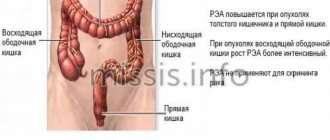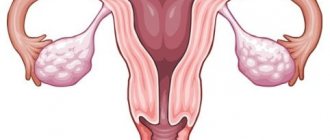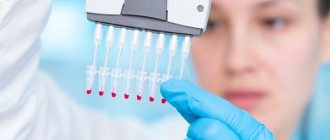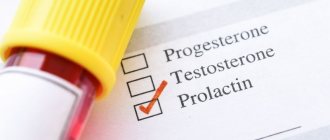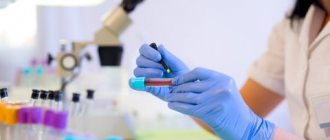You can apply to establish paternity in person and then you just need to contact any clinic with a request to conduct a private test.
But most often, paternity is established in court, when a man does not recognize himself as the father and does not consider it necessary to pay child support to a child whom he does not consider his own.
In such cases, a court decision orders a molecular genetic study called a “Legal Test.”
According to the legislation of the Russian Federation “On State Forensic Expert Activities,” state forensic experts or persons with special professional knowledge working in private clinics have the right to conduct examinations.
Establishing paternity for the court is a rather complicated procedure that requires a strict sequence of actions and the provision of a certain package of documents.
Otherwise, the judge may not recognize the submitted documents as authentic and make a decision not in favor of the mother and child. Therefore, in order not to pay for an expensive procedure in vain, you must adhere to all the rules.
Please note: The legal test can be of two types: “By determination of the court” and “Pre-trial proceedings”. This must be indicated in the request for examination.
Let's look at each of these options separately.
According to the court's decision
The procedure is quite long and complicated, but necessary in cases where a man does not recognize paternity.
What to do:
- the child’s mother goes to court with a statement of claim regarding the fact of establishing paternity;
- when the case is accepted for proceedings, a petition is sent to the court to order a DNA examination;
- the court satisfies your application and issues an appropriate ruling
- The resolution will also set specific tasks and questions for the experts to which the court wanted answers.
Then, at the medical center, biological material is collected and a protocol is drawn up stating that the procedure for collecting samples of buccal epithelial cells has been completed.
To do this, both parents must present passports, the child’s birth certificate and a photograph. Samples of material are taken from everyone: mother, child and alleged father.
This is not a painful procedure and is not at all dangerous to the child’s health - a smear is taken from the inner surface of the cheek. Test results are not given to the applicant, but are sent directly to the court.
Instructions for non-standard DNA samples
In case you wish to maintain confidentiality or are unable to take a standard saliva sample from DNA test participants. We can extract DNA from unusual samples such as hair follicles, fingernails, blood stains and handkerchiefs, as well as other items that retain traces of DNA. Note! The probability of extracting DNA from a non-standard sample is not always 100%. If DNA extraction is successful, the accuracy of the analysis will be above 99%.
It is necessary to understand that in some cases the DNA profile may be mixed, because the sample may contain biological traces of several people (this is especially true for household utensils and combs) YOU can provide a slightly non-standard one. samples, so one is not always enough to compile a complete DNA profile.

1.
Collect DNA samples in PAPER envelopes.
(Do not wrap samples in plastic bags unless otherwise instructed) 2.
Sign your name and relationship on the envelope
3.
Store at room temperature.
In a dark, cool place. (Preferably no more than 48 hours.) 4.
Send samples by mail to the address “Center for Genetic Research” in Yekaterinburg. Sacco and Vanzetti 47. Or provide it to our clinics throughout Russia.
| Sample | Comments on sample collection | Probability of DNA isolation |
| Liquid blood | Pour liquid blood onto (sterile) clean gauze, folded 4-5 times to form a spot 2-3 cm in diameter. Dry the gauze for 1-2 hours in the open air at room temperature. In test tubes with a preservative (citrate or EDTA) for up to 7 days at a temperature of +4°C; if storage is planned for longer, store and transport frozen at 20°C t. and place in a clean paper envelope. | High |
| Blood stains | Blood stain on a bandage, gauze, cloth, paper napkin - place in a clean paper envelope | 95-100% |
| Nails (hands, feet) | Place 3-5 cut nails in a clean paper envelope. When collecting nail clippings, you need to be sure that all the nails belong to the right person. | High |
| Sperm | a stain of more than 1 cm2 or on cotton swabs from the inside of the condom (2-5 sticks). A sperm stain can be on fabric or paper. Sperm sample from a condom: without touching the walls of the condom, dip several cotton swabs into the seminal fluid, carefully remove it, also without touching the walls of the condom, and place it in a clean paper envelope. | High |
| Diabetes test strips | Place 2-3 pieces in a clean paper envelope | 90-100% |
| Chewing gum | Dry the chewing gum at room temperature for 30-60 minutes on a clean paper napkin (or foil), wrap the dried chewing gum in this napkin and place it in a clean paper envelope. | 90-100% |
| Earwax | Take a clean ear stick, thoroughly clean the ear canal with the opposite end (10-20 times) and place it in a clean paper envelope. You need 2 sticks (one stick per ear canal). | 80-100% |
| Cigarette butts | 2-3 pcs. place cigarette butts in a clean paper envelope | 80-100% |
| Hair with follicles | Place hair with follicles, preferably 3-5 hairs, in a small plastic envelope, which is then placed in a paper envelope. (pluck hair with tweezers) | 80-100% |
| Feminine pad or tampon | Place in a paper envelope and dry for at least 8 hours. | 80-100% |
| Handkerchief, napkin | Nasal mucus. Place a handkerchief or tissue with nasal mucus in a paper envelope. If the mucus is wet, dry it for 4 hours. | 50-100% |
| Shaved stubble | Stubble with skin fragments. Electric razor bristles give better results. | 60-90% |
| Umbilical cord | Dried, may also need a sample from the mother | 60-90% |
| Fabric sample | Place a piece of tissue (preferably 4-10 grams) in a 50 ml test tube, fill it with 70% alcohol and send it to the laboratory by COURIER service. Before departure, store the drug at -20 degrees in the freezer. If possible, send the drug on ice (using ice packs frozen at -20 - 30 degrees in a thermal container | 80-100% |
| Abortive material | Place all available abortive material in a sterile plastic container and send by COURIER service to the laboratory. Before departure, store the drug at -20 degrees in the freezer. If possible, send the drug on ice (using cold elements frozen at -20 - 30 degrees in a thermal container. Since abortive material is always contaminated with biological tissue of maternal origin, it is MANDATORY to provide a DNA sample of the mother | 80-100% |
| Mummified tissue | Place a piece of fabric (preferably 4-10 grams) in a clean paper envelope. | 50-100% |
| Fabric in paraffin blocks | Place a block fragment (preferably at least 1 cm3) in a clean paper envelope | 50-100% |
| Watch strap | Place the strap in a clean, transparent plastic bag or a clean paper bag. | 70-100% |
| Razor blade | Place the entire razor in a clean paper envelope. If the razor is wet, dry the envelope. | 50-80% |
| Toothbrush | Place the toothbrush in a paper envelope. If the brush is wet, dry the envelope for 2-3 hours. | 60-100% |
| Comb | Place the comb in a clean paper envelope | 60-100% |
| Cloth | Shirt with greasy collar, tank top, underwear | 60-90% |
| Cup | Carefully wrap the glass in a clean paper napkin. | 40-60% |
| Pacifier | Carefully wrap in a clean paper towel. | 40-60% |
| Drinking straw | Place in a paper envelope | 30-60% |
| Dinnerware | Forks, spoons. Carefully wrap the cutlery in a clean paper napkin. | 30-60% |
| Embalmed Cloth | Place a piece of fabric (preferably 4-10 grams) in a clean paper envelope. Dry the envelope until traces of moisture disappear (usually 1-2 hours at room temperature) | 10-50% |
| Bone | For example, a fragment of the tibia 10-15 cm, not subject to rot, possibly with the remains of mummified tissue | 10-50% |
| Tissue in formaldehyde | Place a piece of tissue (preferably 4-10 grams) in a 50 ml test tube, fill with 70% alcohol. Direct without freezing, at ambient temperature | 0-30% |
| Histological preparations on slides | Place the glass in a clean paper envelope. It should be taken into account that the amount of biomaterial on glass is extremely small. This, and the fact that histological preparations are usually fixed using substances that destroy the DNA structure. This means that the likelihood of DNA isolation from these samples is low. | 0-20 |
Pre-trial proceedings
This procedure is less painful from an ethical and psychological point of view, since in this case the man recognizes himself as the father.
Therefore, both parties agree to voluntarily do a DNA paternity test.
When paternity is established, in 70% of cases there is no need to go to court, since the man agrees to participate in raising the child, pay official alimony or provide financial support on a contractual basis.
But still, you should not rely on these statistics, and the child’s mother, before conducting the test, should petition the court to order an examination.
Only when the decision is made can you go to the clinic to collect samples. The rest of the procedure is carried out as in the first case.
DNA test in case of challenging paternity
In judicial practice, there are cases when fathers themselves insist on a DNA examination after a divorce from their wife, when men have doubts about the fact of paternity.
This opportunity is provided to men in accordance with Article 52 of the Family Code of the Russian Federation.
After a divorce and the assignment of alimony, he can file a lawsuit to challenge paternity if there are significant facts to doubt it.
After undergoing an examination and receiving a negative result for paternity, a man, by a court decision, can be released from paying alimony.
It is recommended that the man himself take care of submitting the necessary information to the bailiff service, otherwise deductions from the salary will be made automatically and the money will have to be returned again by going to court.
It is important to note: Article 52 of the Family Code also provides for such a development of events: if a man knew or assumed that he might not be the father of the child, but did not say so when recording on the birth certificate, then he may lose the right to challenge paternity, since he voluntarily assumed it agreed, giving his last name to the child.
Y-chromosome analysis
Relationship in the male line is determined by examining the Y chromosome. This is one of two chromosomes in the human body that determines its gender.
Women have two X chromosomes, one of which they pass on to their child. For men, everything is more complicated: the male genotype formula looks like XY, and the father will pass on the X chromosome to his daughter, and the Y chromosome to his son. Thus, the Y chromosome is passed on practically unchanged to all male descendants from generation to generation.
The Y chromosome test allows you to determine how closely two men are related on the same paternal line (i.e. grandfather, grandfather's siblings - father, father's siblings - son, sons of father's brothers). And the conclusion is given based on the analysis of the Y chromosome.
This test can confirm or refute whether two men are members of the same family (provided they have the same presumed male progenitor).
This test can also be used to establish paternity in boys in the absence of father's DNA, when it is possible to test samples from the paternal grandfather or the father's sibling. The analysis requires DNA samples from two men who may presumably belong to the same male line.
Price for Y - chromosome test - on request.
Probability of establishing paternity using DNA analysis
The probability of establishing paternity varies from 99.9% to 99.9999%, since no expert can guarantee 100% kinship.
But these numbers speak for themselves - the biological relationship has been proven. If the test results are 0%, then the alleged father is not him.
The cost of the DNA paternity test is paid by the applicant, the one who applies for the examination. Sometimes, by a court decision, both parties are required to pay for the test in half.
You will probably be interested in looking at a mental map of what can cause you to lose parental rights
Or find out HERE how to apply for child support
If the father refuses to take a DNA test for court
Unfortunately, if the putative father refuses to undergo a DNA test even by court order, no one has the right to force him to do so.
But on the basis of Article 79, paragraph 3 of the Civil Procedure Code of the Russian Federation, if one of the parties refuses to participate in the collection of DNA samples, while investigating the circumstances of a particular case, the court has the right to consider the fact of the examination to have taken place and make a decision in favor of the other party, relying on other evidence.
These may include personal correspondence, money transfers from the putative father, the fact of receiving parcels with gifts for the child, facts confirming that during pregnancy the plaintiff and defendant lived together, video footage from the maternity hospital in which a man meets a mother and child after discharge, and others .
Test reliability
DNA testing is a highly accurate technique for studying the microcosm of an organism and the microprocesses in it. The test is deciphered based on the genetic base, which many world scientists and institutes are working to replenish. There are currently no more accurate diagnostic methods that offer different testing options.
Paternity: index
DNA paternity testing is one of the most famous studies in society, causing the greatest public outcry. The results of such research have legal force and are sufficient grounds for making a decision in court. What is the essence of testing?
Undoubtedly, many people know that the human DNA helix has a double structure. Thus, the child borrows part of the genotype from the mother, and part from the father. Comparing the alleles (different forms of the same gene) of the child and the father (and in some cases the mother) can confirm the probability of paternity with up to 99.99% accuracy. It is believed that a 100% result is not possible, since there is always the possibility of a potential father having twins. Paternity is 100% refuted.
The main indicator by which the relationship is calculated is called the “paternity index”. Without getting too technical, in general terms it is a measure of how similar the child's and potential father's alleles are in different areas of the gene code.
To standardize the results and eliminate possible errors in decoding the paternity test, the International Organization for Human Identification has established the following threshold values for determining paternity:
- 99.75 – 99.99% fully proven paternity
- 99 – 99.7% high probability of relationship
- 95 – 98.5 paternity is not excluded, but not proven
- 90 – 94.5 low probability of family connection
For kinship
In recent years, testing to determine nationality has become increasingly popular. And this is not only about people’s desire for self-identification: some need this to move to another country and obtain citizenship, while others want to restore their family tree and have an idea about their ancestors.
Often the results are surprising and have little in common with what the client imagined before receiving them. Sometimes the results of research are such that they can completely change a person’s attitude towards other nationalities, and expand the understanding of the deep interconnection between all people.
Also, testing can be carried out without the consent of the person being tested and the results can be provided to him as an original gift.
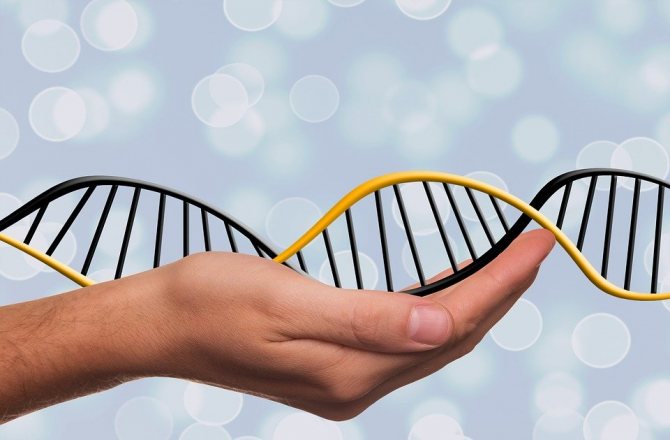
Congenital diseases
Timely testing for congenital diseases and predispositions to them can help you avoid many risks and prolong your life. Forewarned is forearmed. And this fully characterizes the usefulness of such an analysis. Today, specialists are able to identify up to 6,000 different viruses and infections, as well as determine genetic predisposition to the most dangerous diseases of our time.


